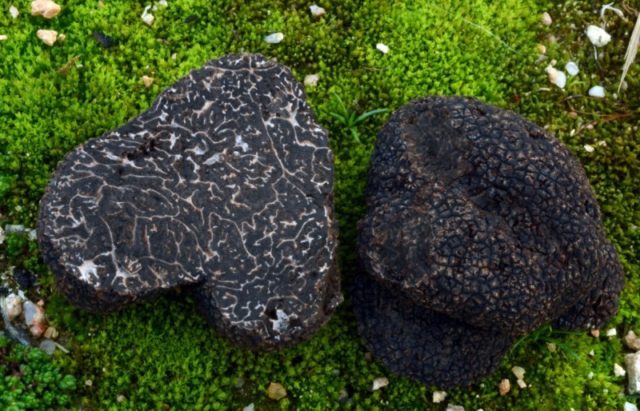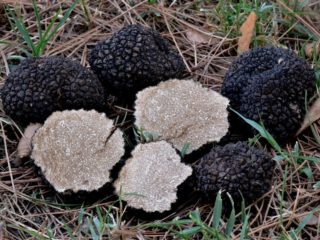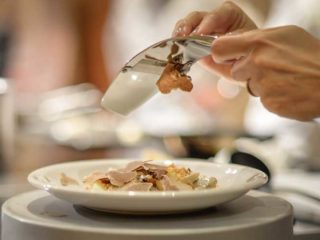Content
Chinese truffle belongs to the conditionally edible species of the Truffle family. The taste of this representative is much worse than that of its related brothers, so it is not often used in cooking. Due to its hard pulp, the mushroom is not consumed raw.
What are Chinese truffles called?
Despite its name, this representative of the fungal world was first discovered in India, and only 100 years later it was found in China. Since then, the species has been exported only from China. The mushroom has several names: Indian and Asian truffle.
What does a Chinese truffle look like?
This forest dweller has a tuberous fruiting body with a diameter of up to 9 cm.The surface is ribbed, painted dark gray or brown. The marbled pattern is clearly visible on the dark brown flesh. Reproduction occurs through large, slightly curved oval spores, which are found in a brown powder.
Where does the Chinese truffle grow?
This specimen grows in large groups underground in southwest China. Prefers to grow next to oak, pine and chestnut. In single copies the species grows in the southern regions of Russia.
Is it possible to eat Chinese truffle?
This representative of the mushroom kingdom is conditionally edible. But due to its hard pulp, it is consumed only after heat treatment. The mushroom has a pleasant rich aroma that lasts for 5 days after ripening, and a nutty taste.
Chinese truffle is not recommended for consumption by children under 7 years of age, people with kidney and liver diseases, pregnant and lactating women, as well as persons with individual intolerance.
False doubles
The Chinese version has a similar counterpart. The Perigord species is a valuable mushroom that grows in regions with warm climates. The tuberous fruiting body is colored deep black. The flesh of young specimens is light, and with age it acquires a violet-gray color. The aroma is pleasant, rich, the taste is bitter and nutty. In cooking, they are used raw, since after heat treatment the mushroom loses its taste.
Rules for collection and use
Collecting this forest dweller is not an easy job, since it is located underground and forms on the roots of trees. Collection rules:
- Mushroom hunting takes place at night, guided by yellow midges that circle over mushroom areas and lay larvae in the fruiting bodies.Mushroom pickers also often take a specially trained dog with them. Sniffing the ground, she begins to dig in those places where this specimen grows.
- A domestic pig can smell the truffle aroma at a distance of 200-300 m. Therefore, Chinese farmers collect mushrooms with it. The main thing is to pull the animal away in time, since truffle is a pig’s favorite delicacy.
- Mushroom pickers often use the method of tapping the soil. A void forms around the adult fruiting body, the earth becomes light and loose, so when tapped, a ringing sound is produced. This method requires the mushroom picker to have a keen ear and a lot of experience.
After mushroom hunting, the harvested crop must be cleared of soil and boiled for 10-20 minutes. After which, crushed fruit bodies are added to sauces, soups, meat and fish dishes.
Conclusion
Because of its hard pulp, Chinese truffle is classified as a conditionally edible species. Grows in warm regions, on the roots of deciduous and coniferous trees. In cooking it is used to add a piquant taste, but only after heat treatment.











